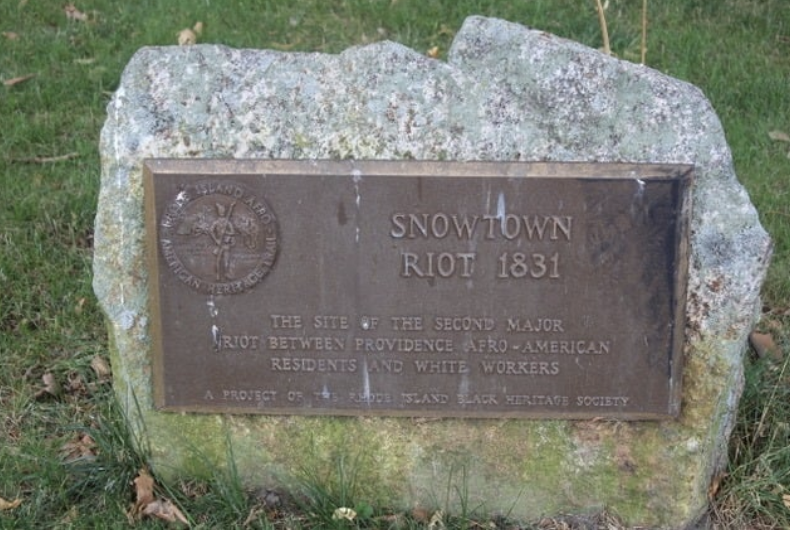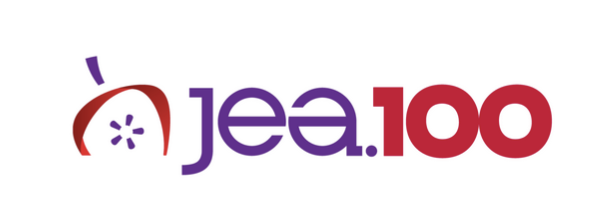Prowling Through Providence
By Group 4
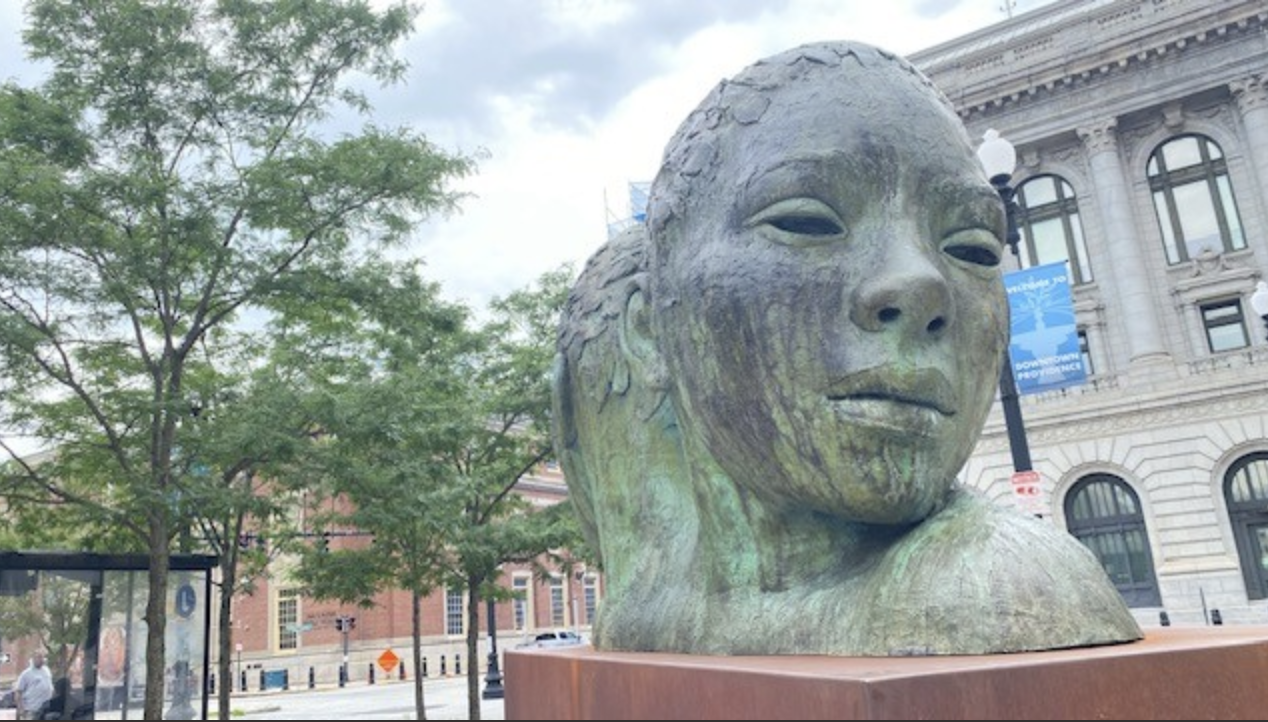
Stepping Back in Time: Green Line Apothecary Revives the Classic America
By David Cutler and Brian Rizer
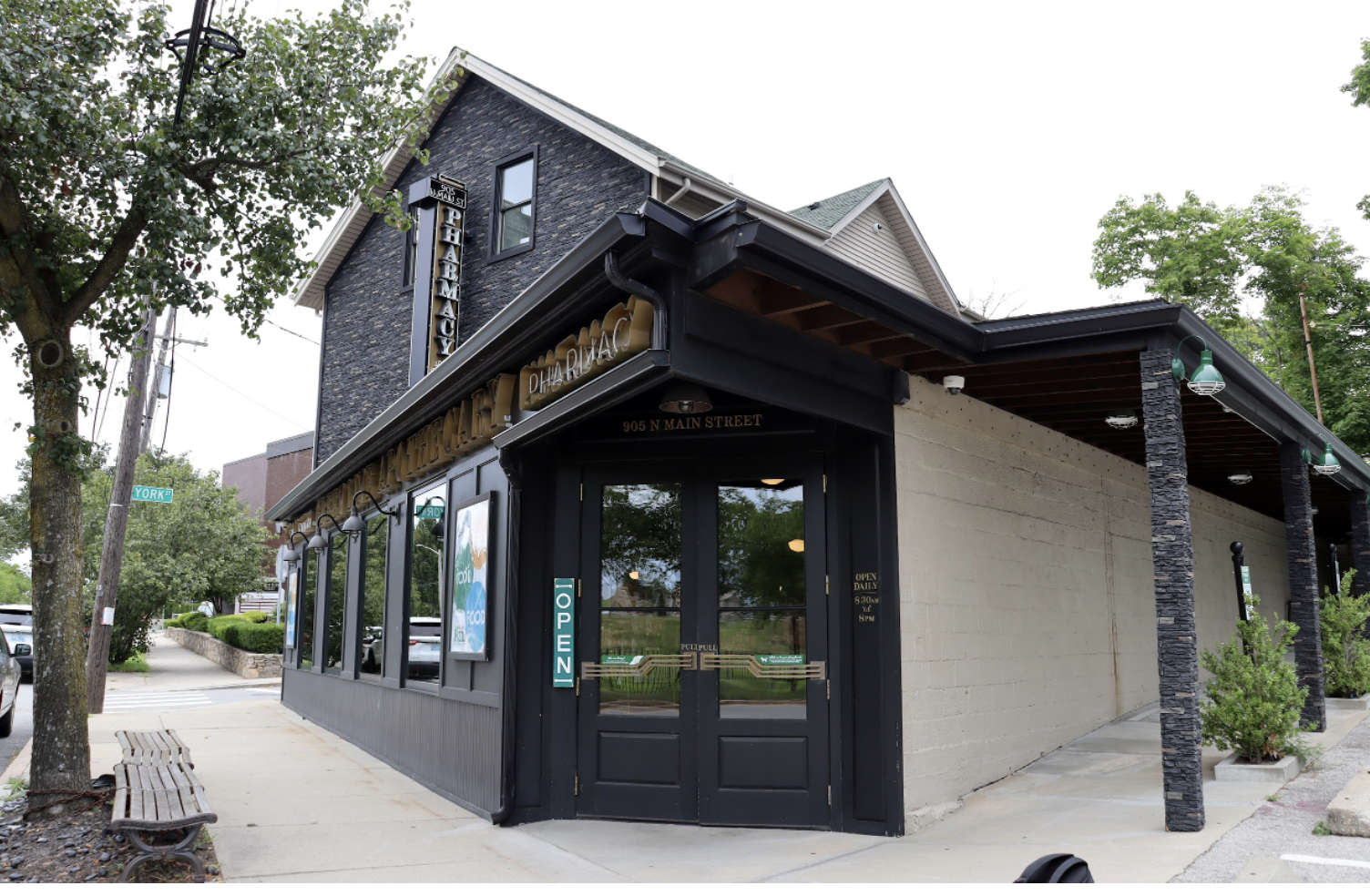
Nestled in the heart of Providence, Rhode Island, Green Line Apothecary offers more than just a pharmacy experience. With its meticulously recreated 1940s ambiance, this enchanting location, one of two (the other in Wakefield), transports customers back in time, blending vintage charm with modern convenience.
The store exudes an authentic vintage feel, with time-appropriate decor and design elements, including classic checkered floors, wooden shelves, and a carved-out portion of an authentic 1949 Chevy truck, which adorns the back wall where some of the freshly made ice cream is stored.
“We wanted to create a space where people could experience a bit of history while enjoying modern pharmacy services,” Christina Procaccianti, the store's co-owner and Director of Pharmacy said.
At the heart of Green Line Apothecary's nostalgic charm is its meticulously restored soda fountain, a genuine relic from the 1940s. This fully functional centerpiece brings history to life with every pump of syrup and the skilled hands of the soda jerk, a term that Procaccianti assures is not an insult but the actual name for the soda fountain operator.
“The fountain itself is an original Bastian Blessing model, dating back to the 1940s and meticulously restored to its former glory,” Procaccianti said. “It was really important to us that we recreate an authentic vintage soda fountain experience. It has very difficult plumbing to work with, but it was really important to us that we really recreate that authentic experience."
What makes this model unique is its design, which includes a slanted front.
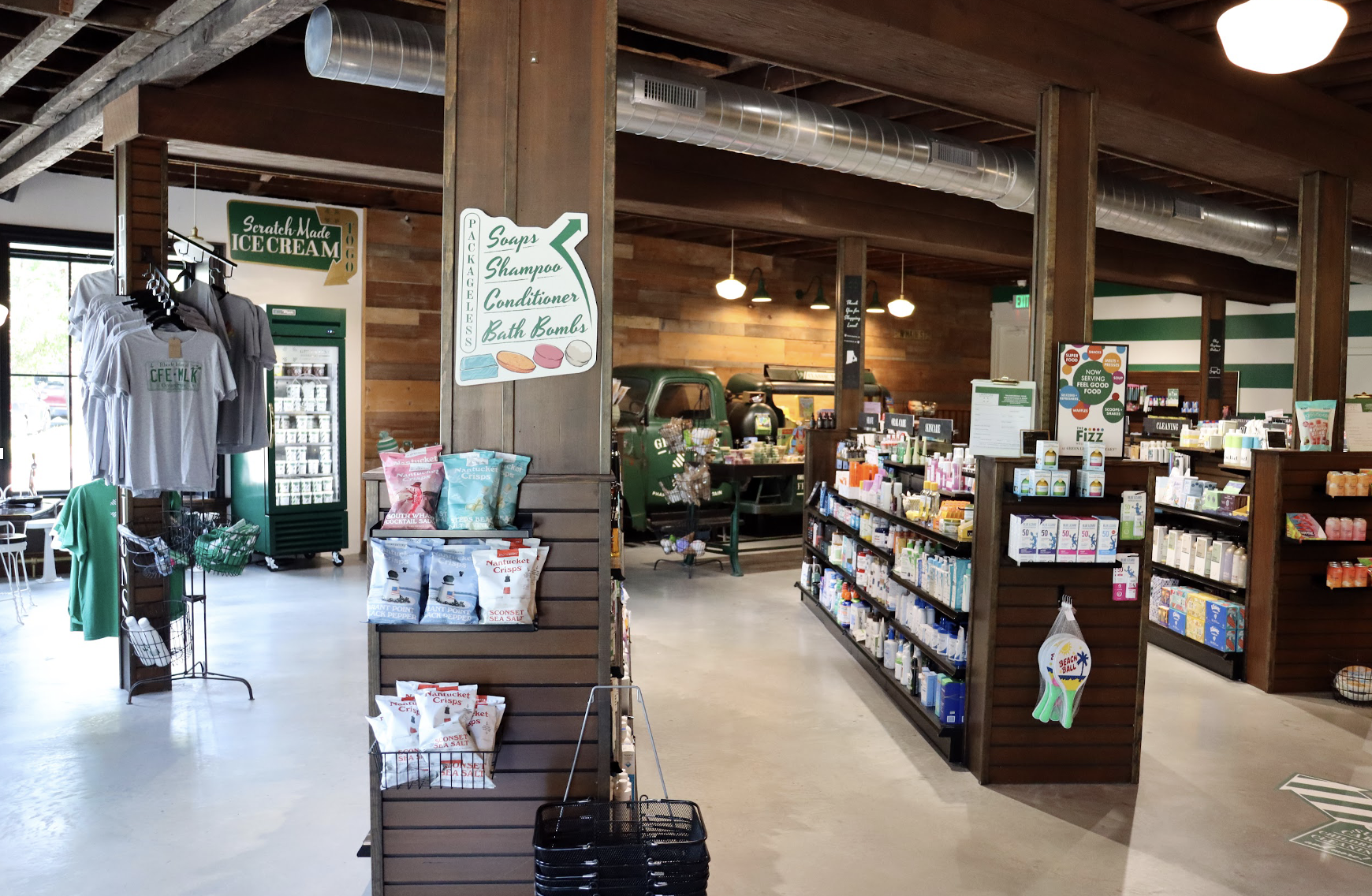
Green Line Apothecary uses a variety of local vendors to offer a mixture of traditional and homeopathic options. (Photo Brian Rizer)
Green Line Apothecary uses a variety of local vendors to offer a mixture of traditional and homeopathic options. (Photo Brian Rizer)
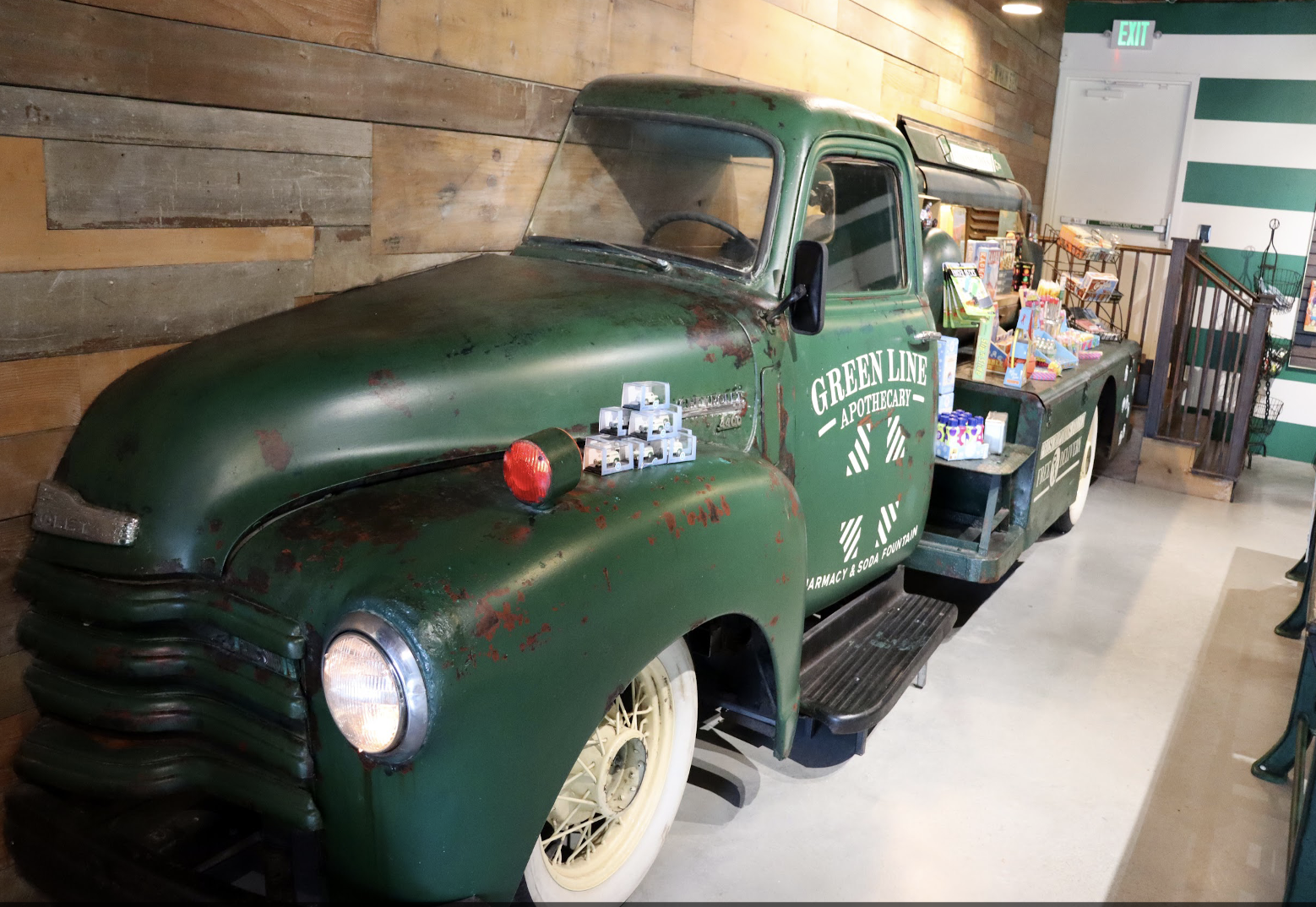
Green Line Apothecary consists of many elements of the 1940s, including this 1949 Chevrolet truck which serves as a display. This is one of four Chevy trucks in the two locations. (Photo Brian Rizer)
Green Line Apothecary consists of many elements of the 1940s, including this 1949 Chevrolet truck which serves as a display. This is one of four Chevy trucks in the two locations. (Photo Brian Rizer)
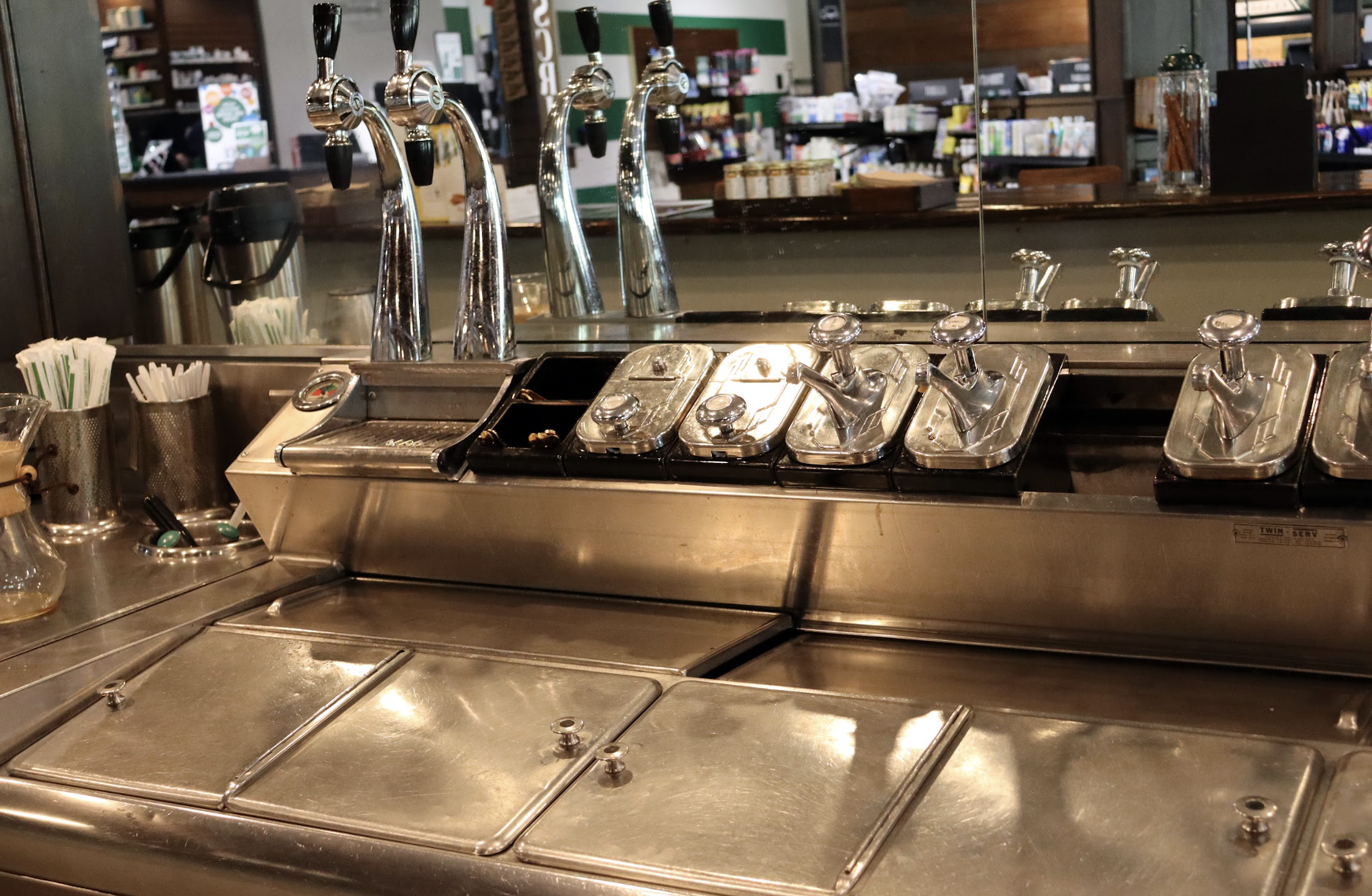
Soda fountains were a key element of pharmacies through the Prohibition Era and into the 1950s. The Procacciantis wanted to ensure an authentic experience, which includes this fountain that includes a restored Bastian Blessing from the 1940s. (Photo Brian Rizer)
Soda fountains were a key element of pharmacies through the Prohibition Era and into the 1950s. The Procacciantis wanted to ensure an authentic experience, which includes this fountain that includes a restored Bastian Blessing from the 1940s. (Photo Brian Rizer)
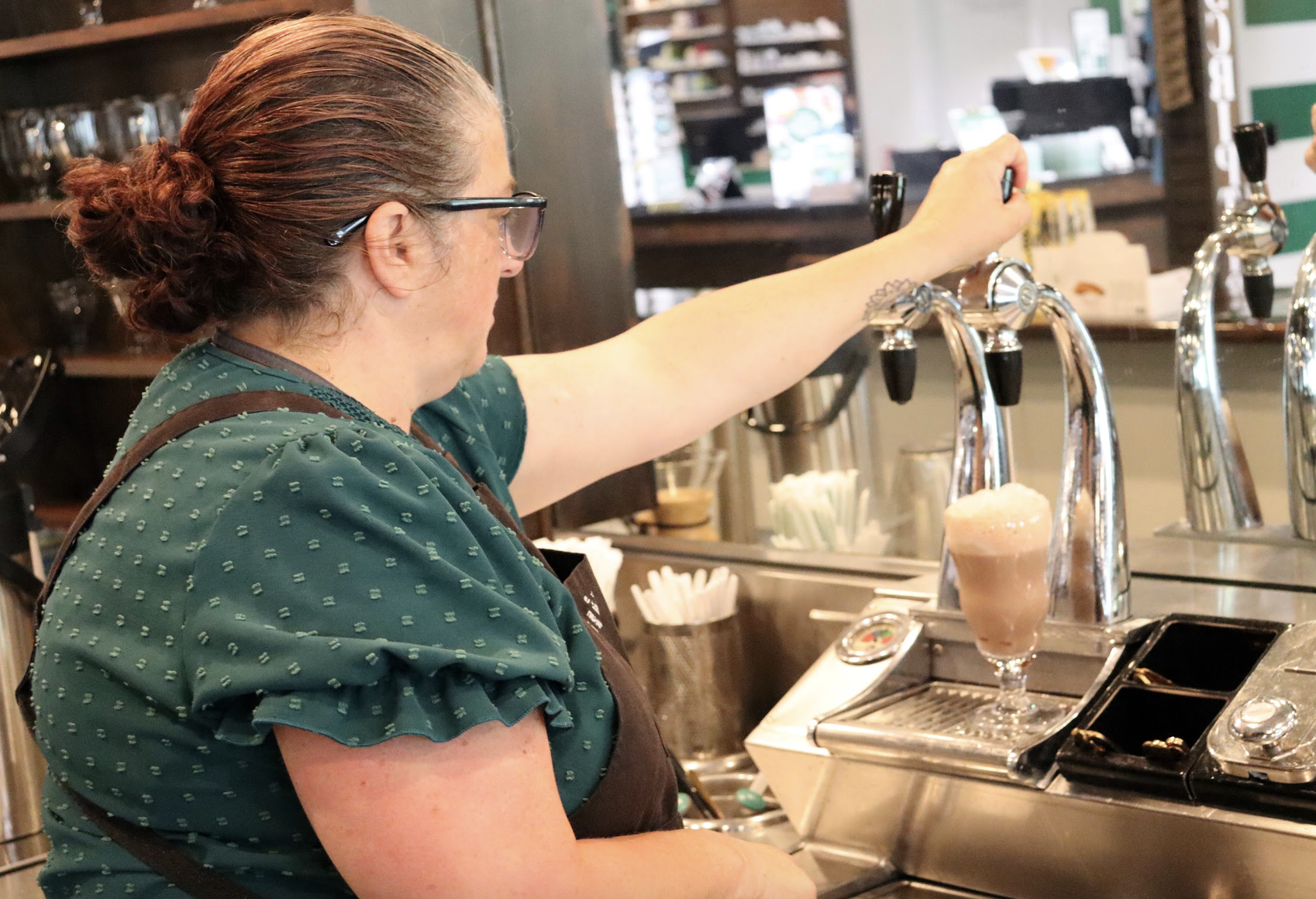
Catherine Lott creates a pineapple turmeric tonic which is designed to have anti-inflammatory qualities. The menu of The Fizz has numerous drinks and food items that are gluten free and vegan. (Photo Brian Rizer)
Catherine Lott creates a pineapple turmeric tonic which is designed to have anti-inflammatory qualities. The menu of The Fizz has numerous drinks and food items that are gluten free and vegan. (Photo Brian Rizer)
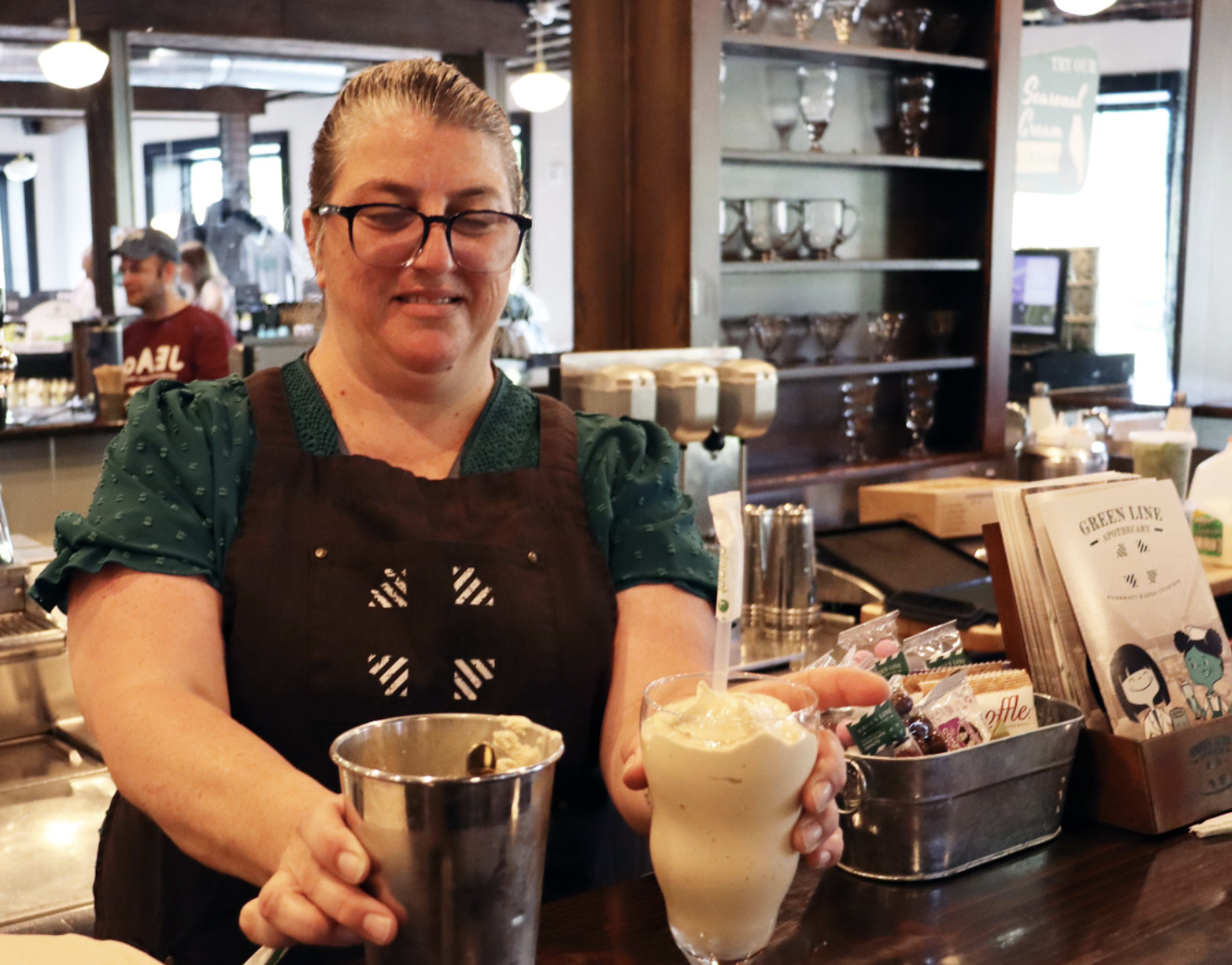
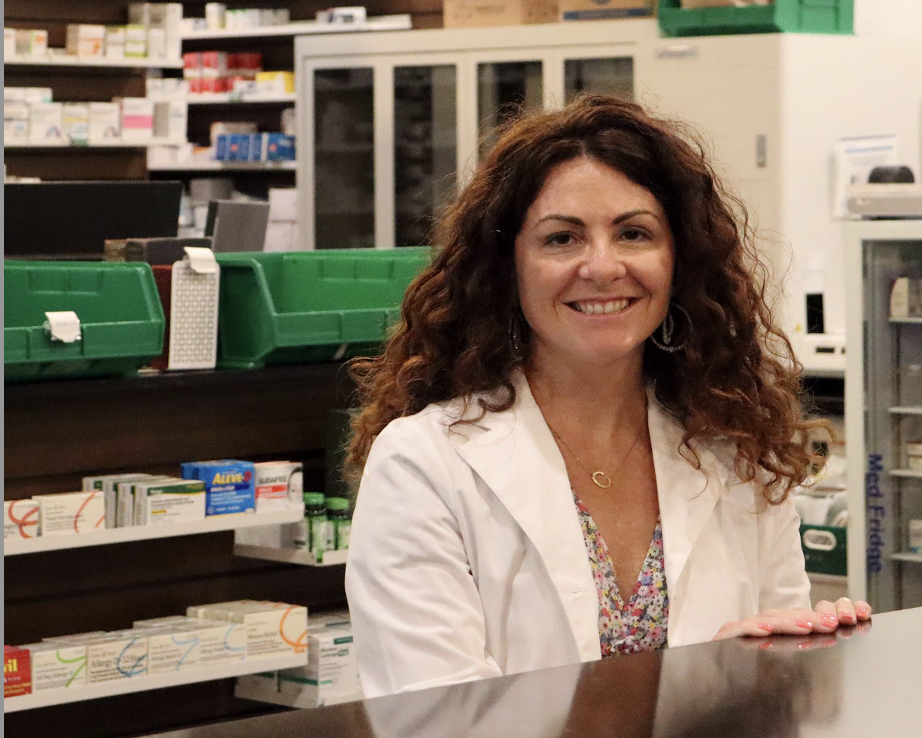
Pharmacist and co-owner Christina Procaccianti named Green Line Apothecary after the Green Line in Boston, Mass., where she and he husband met. ((Photo Brian Rizer)
Pharmacist and co-owner Christina Procaccianti named Green Line Apothecary after the Green Line in Boston, Mass., where she and he husband met. ((Photo Brian Rizer)
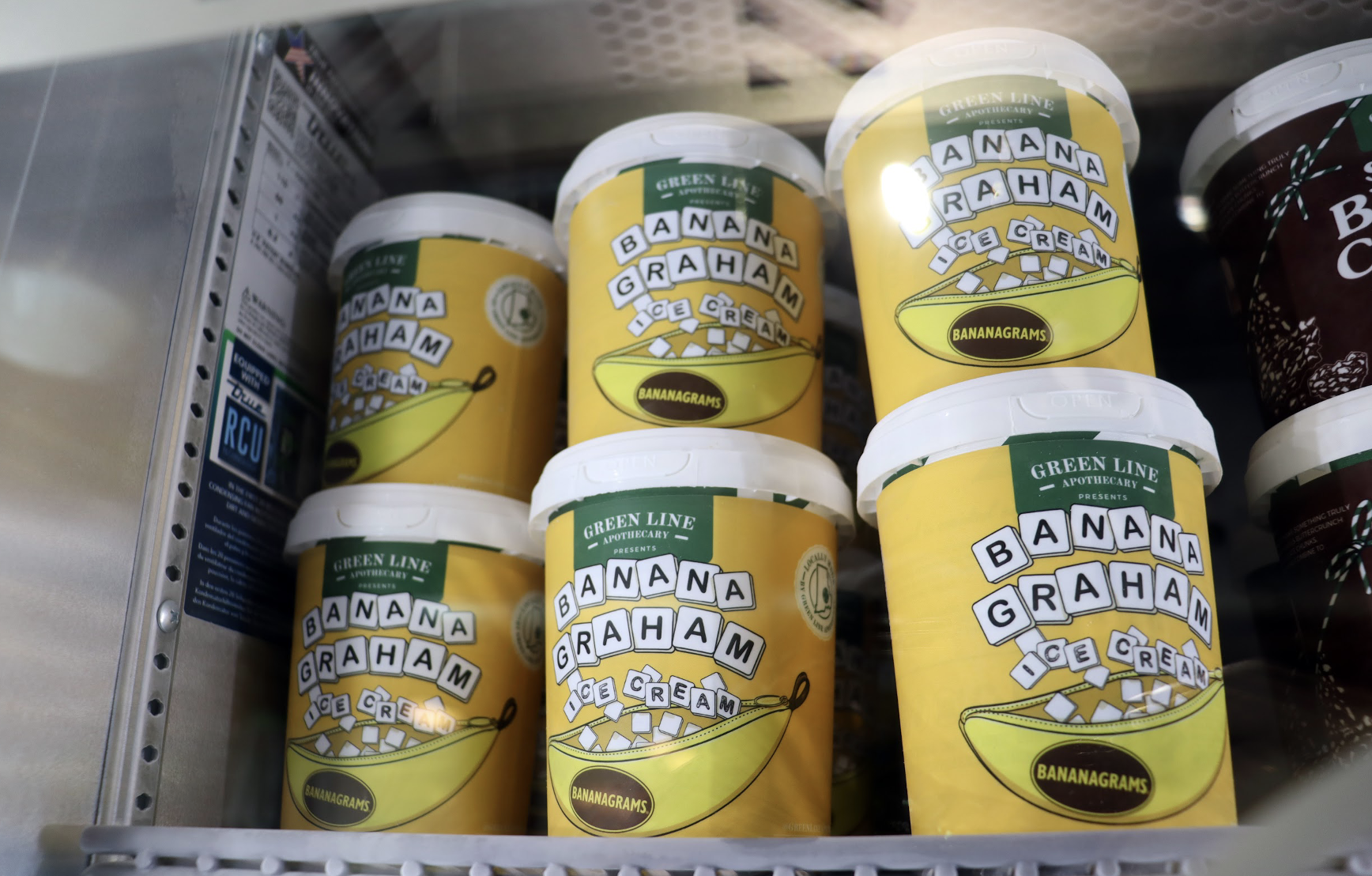
One of the products featured at Green Line Apothecary is their own crafted ice cream. One featured flavor is “Banana Graham” named after the popular word game. (Photo Brian Rizer)
One of the products featured at Green Line Apothecary is their own crafted ice cream. One featured flavor is “Banana Graham” named after the popular word game. (Photo Brian Rizer)
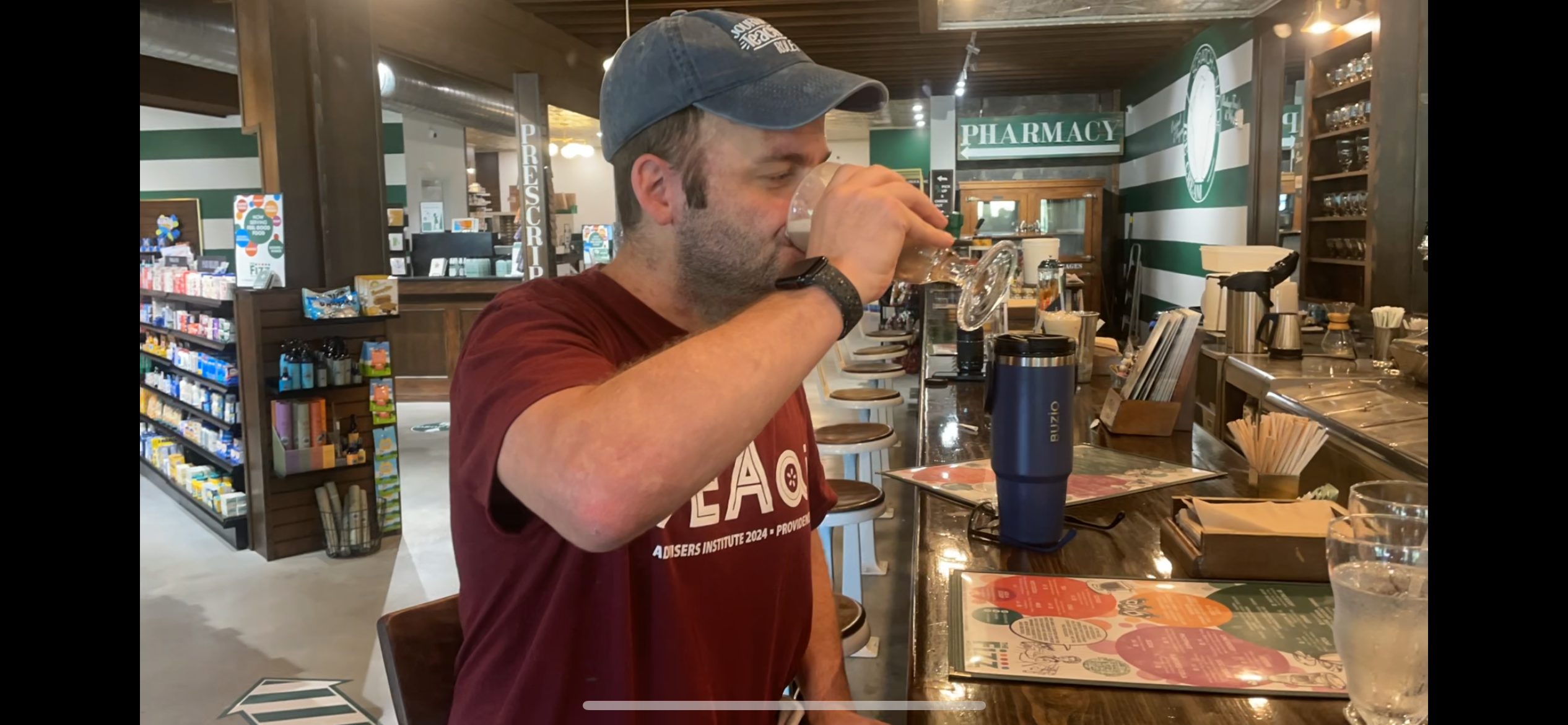
David Cutler chugs Chocolate Egg Cream, one of the featured drinks of The Fizz, the soda fountain section of Green Line Apothecary. (Photo Brian Rizer)
David Cutler chugs Chocolate Egg Cream, one of the featured drinks of The Fizz, the soda fountain section of Green Line Apothecary. (Photo Brian Rizer)
“The front of the fountain slants down slightly so that women, who are naturally smaller in stature, could reach down more easily to scoop ice cream,” Procaccianti said, explaining that during World War II, women served behind the counter. “We thought it was special when we came across it because we're women-owned and operated. It just felt right.”
The soda fountain serves as more than just a nostalgic artifact; it’s a vital part of the store’s identity.
“You can't tell the story of the classic American drugstore without talking about the soda fountain," Procaccianti said. “During Prohibition, soda fountains became de facto gathering places, similar to bars, and they always had their origins in pharmacies.”
Among the many classic treats offered at the soda fountain, the egg cream stands out. This iconic drink, made with milk, chocolate syrup, and carbonated water, is served using a traditional Brooklyn style.
“There is some debate about where the name comes from, but there is no egg or cream in it,” Procaccianti said. “It's a very simple recipe, but the technique involved is getting the ratios just right. We serve it in what's known as the Brooklyn style. The idea is you’re going to stir it really quick and chug it just like a beer.”
The soda fountain menu includes other period-relevant items like root beer floats and cherry phosphates.
“All of our soda is dye-free, and there's no high fructose corn syrup. We stick with flavors that are as close to period relative as possible,” Catherine Lott, the store’s buyer said. “It's a simple menu, but everything is either all-natural, locally sourced, or organic if possible."
Soda Fountain Manager Michelle Ciociola enjoys crafting these classic treats. Her passion for creating these nostalgic delights adds to the authentic feel of the soda fountain experience.
“I like to make the floats,” Ciociola said. They're fun. You get a little bit of soda, a little bit of ice cream, and it's always a delight to see people's faces light up.”
The menu also includes delicious food items like soda waffles, which are made with soda water to add a crispy lightness that is unique to Green Line Apothecary, according to Procaccianti.
“We wanted to stick true to our ethos that is health and wellness first and foremost. So we tried to develop this menu with a 'is it good for you? Does it feel good? Is there a health benefit there?' mindset,” Procaccianti said. “It’s all about creating an experience that feels both familiar and special.”
Director of Operations David Roberti remembers opening the store in 2019, just before the pandemic.
“It was a challenge to keep the soda fountain aspect alive during those times," Roberti said. "When the pandemic came, we couldn’t even serve anything. Just every day I came in, it was just an empty thing. We piled stuff on so nobody sat at the counter.”
Despite the challenges, Green Line Apothecary adapted by significantly increasing its delivery services to ensure that customers could still get their prescriptions and other necessities.
“We went from having one or two drivers to having 14 to 18 drivers at both stores,” Roberti said. “The back end picked up tremendously because nobody wanted to go out, so we were delivering a lot more on prescription ends.”
The store also played a crucial role in the community by providing COVID-19 vaccinations.
“We had lines going out the door for the COVID shots,” Roberti said. “The doctor's office next door was upset because people were parking over there to get the COVID shots. It was chaotic, but we managed it well and provided a vital service to the community.”
Roberti is proud of how Green Line Apothecary made the vaccination experience as pleasant as possible.
“Parents appreciated that they could bring their kids here, get their shots, and then treat them to ice cream right after,” Roberti said.
All in all, Green Line Apothecary offers a refreshing alternative to typical chain pharmacies. Its blend of historical charm and modern service preserves the nostalgic spirit of the classic American drugstore.
Coffee Shops in Provdience
By Dorie McKernan, Michael Abrams, and Kristin Chase
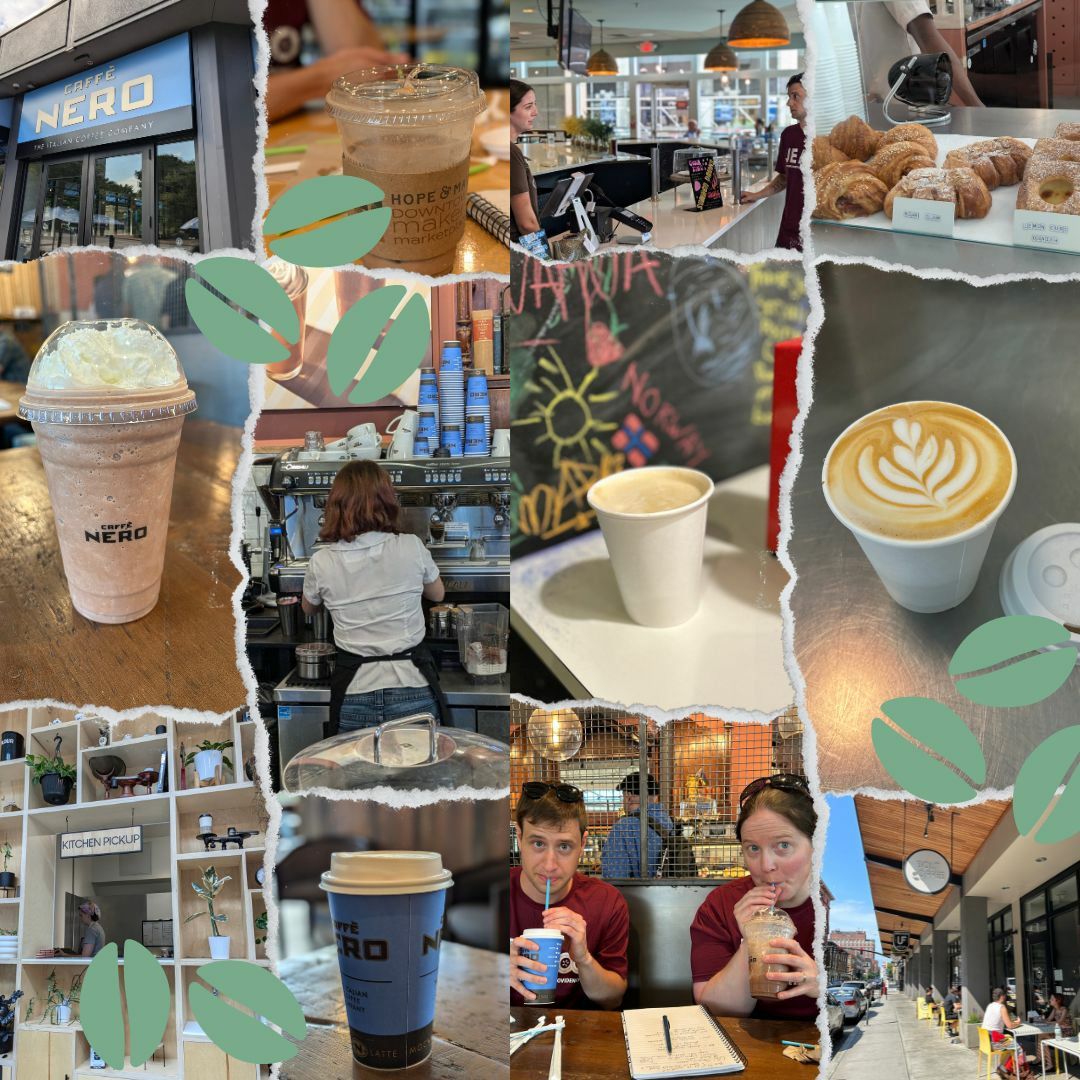
Within a 10 minute walk of the Omni Hotel and the Providence Convention Center, one can find several coffee shops, and once the major chains of Dunkin’ and Starbucks are removed, there are still plenty of options.
We set out to find a “taste of Providence” by going to five local shops.
We started at Caffe Nero, probably the most popular for those staying at the Omni because it is right across the street. Caffe Nero is not exactly local as it’s a London based chain, but there are some locations in the United States, most concentrated in Boston.
We asked our barista to recommend a popular or trending hot and cold beverage.
Caramel latte made with whole milk: This tasted like your average caramel latte. It was a bit sweet, but not overly so. However, because of a lack of a unique flavor, it’s not something we feel like we would go out of our way to order again, feeling like it’s not worth the calories.
Frappe pistachio mocha latte with whole milk: We had a mixed response to this. The pistachio flavor came through which pleased those who really like pistachio. Initially, it did not seem overly sweet, but it became a bit more cloying as we kept drinking.
Overall sense of the shop: There was a constant flow of customers which reflected a mixed clientele of business people, convention/conference attendees and tourists. The decor was a mix of industrial and cozy with metal chairs and grilles in some places and tartan upholstered chairs and wooden tables in others. Notably, the acoustics allowed for individual conversations to happen without worrying about other people overhearing or a need to shout.
Our next stop found us at one of the three locations of Bolt Coffee, a Providence specific cafe. Here, we again asked for the barista to recommend a hot and cold beverage.
Lavender latte with whole milk: First and foremost, the floral foam art made for a beautiful presentation. We were able to drink it immediately with a great temperature, hot but not scalding. The drink did not have a lot of sweetness and the floral quality of the lavender came across as spicy or herbal. For a hot drink on a hot day, this was surprisingly refreshing.
Espresso Tonic: Our cold drink puzzled us. As in, we do not understand why anyone would drink this. For those who do not know what this drink is, it’s tonic water with a shot of espresso. Ours also included a lime garnish. The drink was bitter on bitter. While we were there, no one else ordered this drink.
Overall sense of the shop: Again, there was a steady flow of customers. The decor came across as trendy for a millennial crowd - bright and open, with a spare menu on the board that included eats like avocado toast and rice bowls. While the cafe was clean, it did not make us feel like a place to hang out for a long time.
We continued our tour at Hope & Main, which is the outlet for the makers market non-profit that supports local Rhode Island food product entrepreneurs. We discovered that while the shop sells coffee, it primarily focuses on tea. Shastea is one of those local Rhode Island food businesses. We still ordered both a hot and cold coffee drink.
Dirty chai with whole milk: The less said about this, the better. The tea, milk, and coffee did not blend, and the drink tasted a bit like tea made in a coffee pot.
Mexican chocolate with whole milk: The quality chocolate used in this drink stood out as quite pleasing on the palate. The spiced quality of a Mexican chocolate felt toned down, with the spice creating a weird overtone.
Overall sense of the shop: The goods for sale from the entrepreneurs added interest to an otherwise sterile and almost cafeteria like vibe. While the motives of the non-profit are admirable, this is probably not a place to go out of one’s way to visit for coffee.
Next stop, Small Point Cafe - our favorite spot on our coffee shop tour. We walked in a little unsure having not been wowed by our previous drinks. Once again, we asked for recommendations and were told to try “The Buddy” for our cold beverage. For the hot beverage, we had a lot of choices of signature lattes and went with the most interesting sounding flavor - Rosemary Brown Sugar.
The Buddy - Dirty coffee milk, “like revenge, best served cold”: Universally, this was our favorite drink of the day. Named after a former mayor of Providence known for corruption, this drink takes the official drink of Rhode Island, coffee milk, and adds in a little more joe. It’s sweet flavor was like chocolate milk, but coffee, or like melted coffee ice cream. Overall, a real delight.
Rosemary Brown Sugar Latte made with whole milk: There was a nice toasted flavor to this hot beverage that came across as savory. It was nice, but did not leave the same impression as the coffee milk.
Overall sense of the shop: The atmosphere felt genuine and authentic. Small Point Cafe seems to know exactly what it is and does not try to be anything else. About 40% of its customers are regulars, and it’s easy to see why.
Our final cafe stop was Little City. Here we tried both the hot and iced version of the Coconut Caramel latte and an iced Pistachio Praline latte.
Coconut caramel latte - hot: This was flavorful but did not have as much coconut flavor as we had hoped based on the name. It did have beautiful foam art on top.
Coconut caramel latte - iced: This just tasted like a sweet latte. There was no coconut flavor at all.
Pistachio praline latte - iced: Tasted just like the coconut caramel and had no pistachio flavor.
Overall sense of the shop: This was a smaller place with as many tables outside as inside. It had clean lines and a clean white and brown palate. The shop provided a fairly limited menu, but it had a steady stream of customers.
After our tastings of these five shops, we recommend heading to Small Point Cafe for a taste of Rhode Island, or just simply popping in to Caffe Nero for an expected flavor that’s not Dunkin’ or Starbucks. It’s also safe to say that all of the baristas we met know their menus and were quite friendly and welcoming.
Meet Providence’s Baristas
Along our journey to find coffee near the Omni Hotel, we spoke to several baristas about their recommendations and experiences.
Lizzy Newkirk - Hope & Main
Lizzy Newkirk, who has been working at Hope & Main for six months, spoke fondly of the shop’s tea offerings. Newkirk explained that tea is the main draw of the shop, not coffee, but the coffee drinks are equally popular.
“Our coffee is not bad,” Newkirk said.
According to Newkirk, a defining quality of Hope & Main is its mission to promote foods made locally. The store not only sells beverages, but also provides a small storefront that sells artisan goodies such as pastas, rugelach, hot sauces, and pet treats.
Newkirk enjoys working at a shop that appeals to a range of customers, even with such a specially focused mission.
“It’s a lot of bankers,” Newkirk said. “We are right next to a hotel, so we get a lot of people from there.”
Ryan Lopes - Bolt Coffee
A quiet yet passionate barista, Lopes has been working at Bolt for the last eight years. His extensive experience guides his understanding of this coffee shop, such as his knowledge of the origin of the shop’s specialty espresso tonic.
“It’s a west coast thing,” Lopes said. “Our previous director had gone to San Francisco in 2013 and they had it there.”
Lopes believes the drink has become a seasonal favorite that is unique in Providence.
“It’s definitely a summer vibe,” Lopes said.
What You Need To Know About Rhode Island Coffee
Adam Buck, owner and manager of the famed Small Point Cafe, guided us through some basics about the history of coffee in Rhode Island.
“Coffee milk” is the official beverage of Rhode Island, according to Buck. This sweet and creamy drink is created by reducing coffee into a syrup and then adding it to milk. The process is much like creating chocolate milk.
Rhode Islanders grow up drinking coffee milk out of cartons, but Buck likes to take a modern spin on the drink and serve it over ice. Either way, this drink is a must-try when visiting Providence - and the location of Small Point Cafe makes it ideal for visitors staying at the Omni Hotel.
Jerry's Artarama Prepares for Upcoming School Year
By Elizabeth Colahan
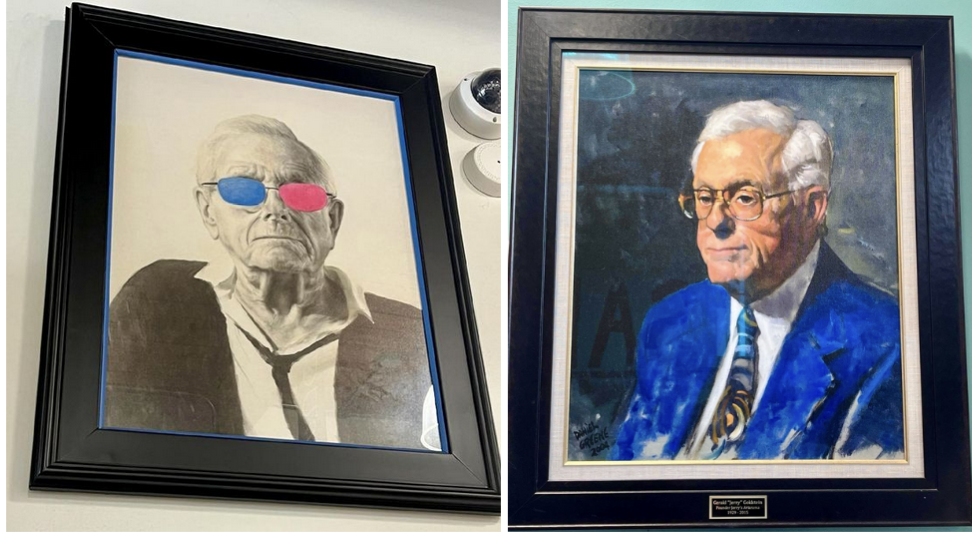
“That’s ‘fun Jerry’,” said Stephanie Angelini as she pointed at an artist’s creative interpretation of a portrait of Jerry Goldstein, clad in pop sunglasses of red and blue, his shirt open and tie loosened.
“And this is mildly-disappointed-in-you-Jerry,” she said as she pointed at a more traditional portrait of Goldstein: white hair, glasses, and blue suit; ever the businessman and the founder of Jerry’s Artarama.
Goldstein’s dueling portraits hang over the entrance to Jerry’s Artarama, an art store for locals and students, both professionals and amateurs. Although it is the smallest of the fifteen locations in the United States, what it offers to the artsy East side of Providence is more than just paint and pastels.
“Right now we’re gearing up for back-to-school,” said Angelini, Educational Accounts and Kits Manager at the store.
She works in partnership with local schools, colleges, and universities to create kits of supplies that students will need for a particular course. Professors and art departments reach out to her with their specific supply lists.
The popularity of Angelini’s art kits has resulted in Jerry’s quickly outgrowing its small footprint on the corner of North Main Street.
“My department is growing so much I have a shipping container outside because there was just not enough space,” she said.
Angelini’s current roster of schools includes the Community College of Rhode Island, Rhode Island College, Brown University, UMASS Dartmouth, the University of Rhode Island, Worcester Polytechnic Institute, Assumption College, and Roger Williams University.
A glaring omission from her list is Providence’s most famous and well-known art school: the Rhode Island School of Design, casually known as RISD.
“Everybody just assumes that our clientele is just students from RISD. RISD has their own art store. We do get the more savvy ones that realize they could save some money,” she said.
At the moment, Angelini’s shipping container holds hundreds of cardboard boxes of paper, drafting boards, and plastic bins of architecture tools.
These supplies are part of a $770 kit that freshmen architecture students at Roger Williams University need for their courses. The kit includes drafting boards, paper, pencils, and other technical drafting supplies.
Angelini anticipates a busy month as the school year approaches
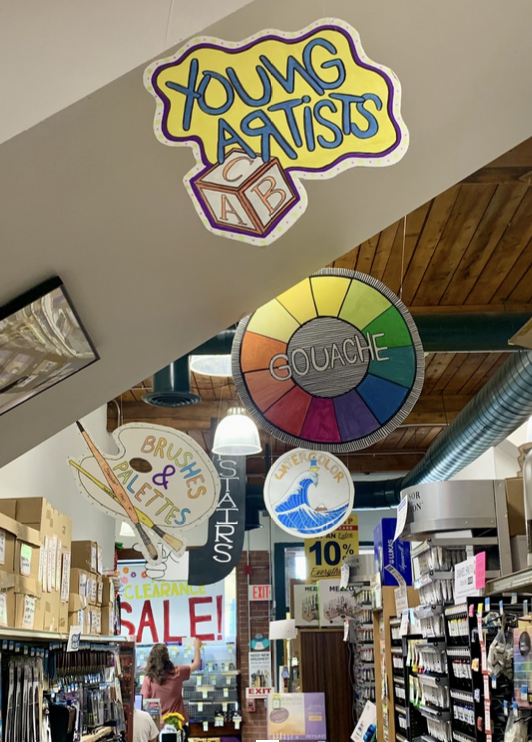
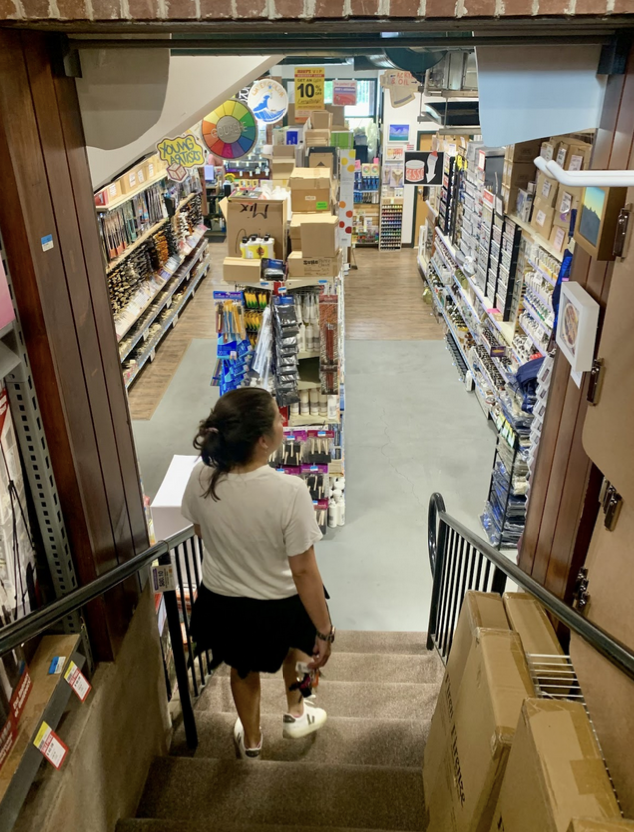
Stephanie Angelini has had a busy month preparing art supply kits for local schools.
Stephanie Angelini has had a busy month preparing art supply kits for local schools.
Art in Providence
By Jillian Ray and Sally Rayn
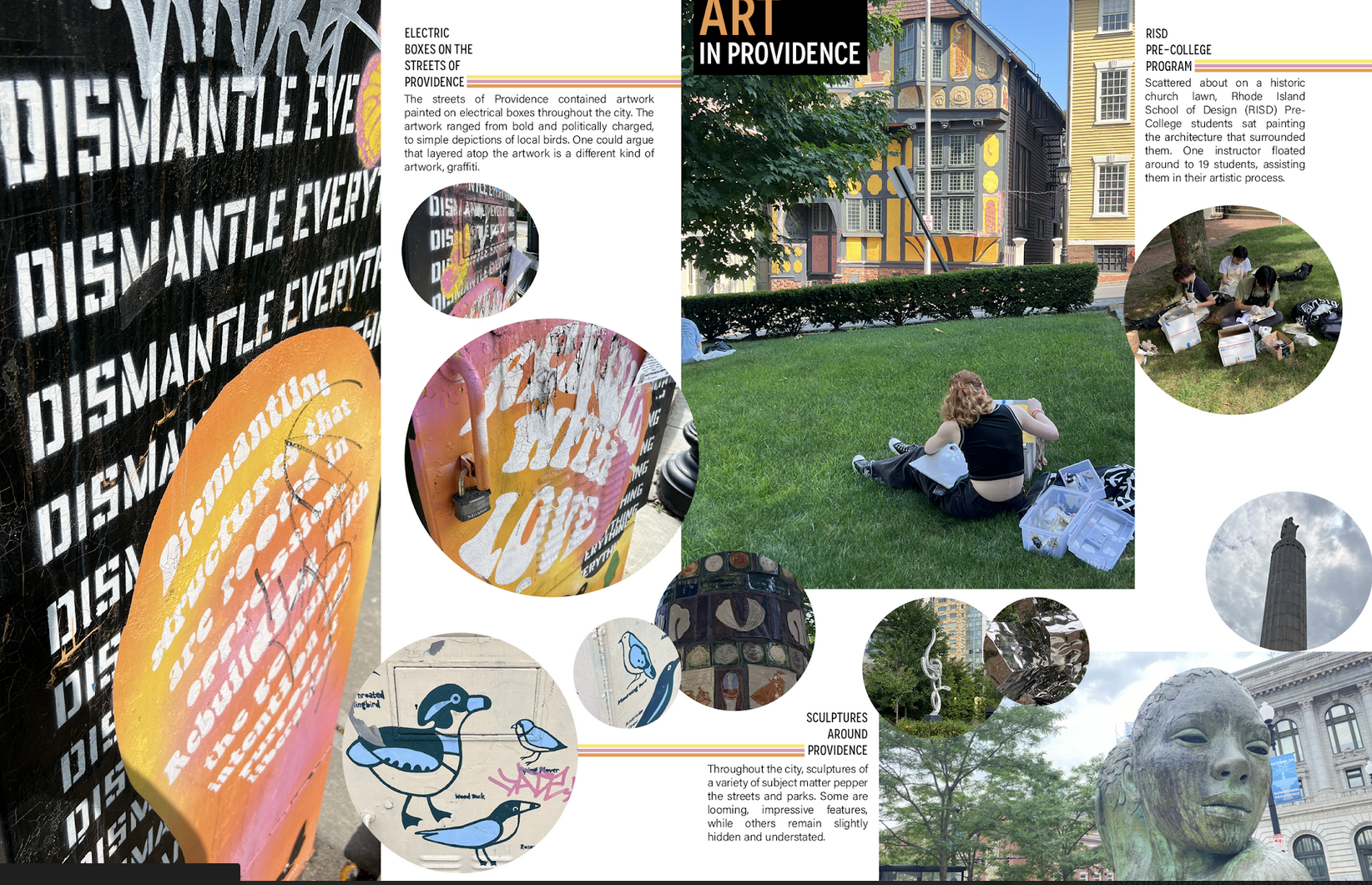
Summer Brain Drain Be Gone
By Nicole Gordienko and Nancy Strain
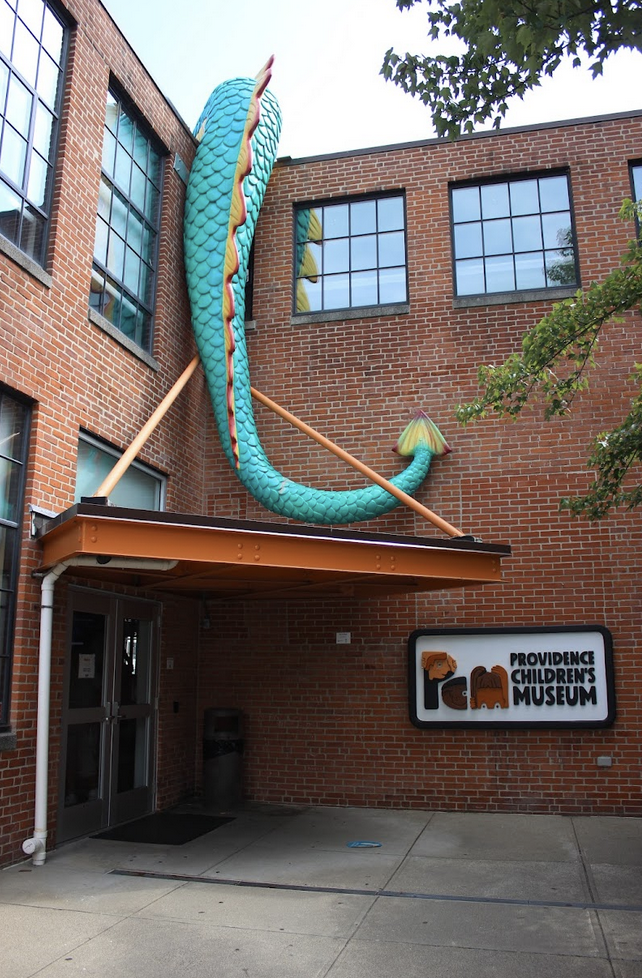
Commonly known as the brain drain, summer can potentially become a time when children and teens lose academic skills and social interaction.This doesn’t have to be the case. In Providence, Rhode Island, Children and teens are offered opportunities to sharpen skills that last beyond the summer break.
At the Providence Public Library, programs abound that not only bridge the gap between the end of summer and the following school year, children and youth can use skills learned in these programs to support their community and apply these skills in the workforce. One of these programs, Data For Good, pairs students with non-profit organizations. Molly Glodblum, an assistant in the library, explained that students in Data for Good are taught to “use Tableau which is a data visualization software. They then work with nonprofits and look at their data to make sense of it. They are learning this new skill and getting paid for it”. In addition there is an ELL, English Language Learners, program at the library. There is both an advanced and beginning level. Children and teens meet three times a week to practice their English. The program has ELL certified and teacher assistants working with the students.
The library is also home to a number of other programs for kids of varying age levels. On Wednesdays and Thursdays at 10:00 a.m., the children’s librarian takes the kids to the Grace Episcopal Church courtyard for story time. If you are an older student looking for a challenge, the ground floor of the library houses an incredible space for kids to explore topics in STEAM education Through their Makerspace Program. Here, kids have access to “cutting machines, sewing machines, 3D design, dye-sublimation printing, laser cutting, and heat presses for fabric, hats, and mugs” (Community Libraries of Providence). For a schedule of ongoing events, parents and kids can visit the Providence Library website for details.
Another place catering to kids in Providence is the Providence Children’s Museum. Children’s laughter and yelling permeate the space as one enters the museum. The museum is divided into four rooms: a market, a dress up room, a toddler playground, and an arts and crafts room. The theme changes each month. If a family has Neighborhood Healthcare, the museum is free to enter. The museum has group visits and has behaviorists who work with neurodivergent children in order to make the experiences offered at the museum inclusive.
Similar to the atmosphere in the Providence Children’s Museum, The Trinity Rep Theatre’s entrance echoes with giggles and chattering as kids huddle on the ground around chart paper with colorful markers, making posters. Trinity Repertory Theater has been providing summer programming since 2007, and it has evolved from a four week commitment to a one week commitment for youth to better accommodate their schedules. The theater works with a broad range of children and youth from grades 1-12. These kids, in learning acting skills, learn how to to work with others and according to Jordan, the Director of Education it “prepares them for school again”. The program has high retention rates. Jordan described one child who “started when she was five and has come every year”. While there is a fee for the program, the theater offers substantial financial aid for families in need of assistance, and like the museum, there is neurodivergent support for those in the program who need it.
While not native to Providence, Rock and Roll Chorus is a professional level touring show for kids who perform music using only their voices. This is similar to Acapella, but technology is used to make their voices sound like the instruments that are played in the songs. This New Jersey based company is made up of high school kids all over the state who are brought together by their love of music. They spend three and a half weeks of their own time in the summer to tour the country doing what they love. The director of the program, Joe, states, “the cool thing for me as a teacher is the life skills they build being on the tour that gets them ready for college.” Even though they are doing something they love, they are still learning important life skills.
Joe started this company back in 2007 as a fun summer project to give kids an experience that they couldn’t get in schools. Joe says, this is my project. 17 years. seven full albums. We’ve also been on the Grammy Ballot five times and we’ve opened for some really big bands.” Joe plans to continue doing this as long as both he and his kids are having a good time. While the summer can be a much needed break for kids, it can also be a chance for them to hone in on their passions and expand their knowledge that will prepare them for the path they intend to take later in life. Joe’s ultimate goal is for kids to “operate where if they got a job offer from a professional bus tour right after this, there would be no learning curve for them.”
Summer can look different for many families. Some kids go to the beach, take family vacations, or visit distant relatives. Some parents have to put their kids into care programs so they can continue to maintain a consistent work schedule. What is apparent is that in Providence, kids are never bored. There are countless free, discounted, or paid opportunities offered to youth. These opportunities can help kids deepen their passions or even find new ones. Some will make lifelong connections, or learn how to be independent young adults. Markeem, who grew up in Providence says, “summer in Providence is the best. There’s always something to do.”
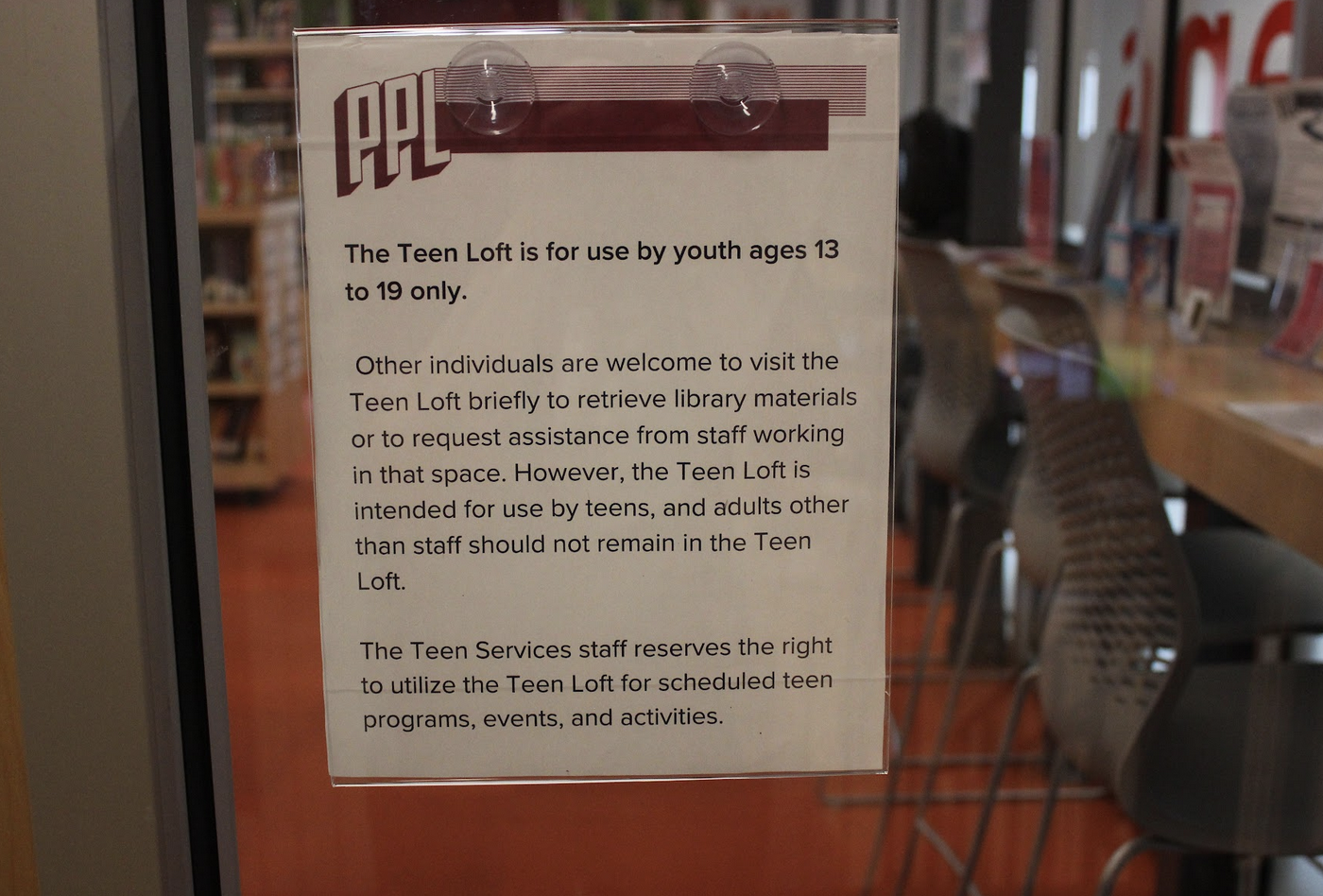
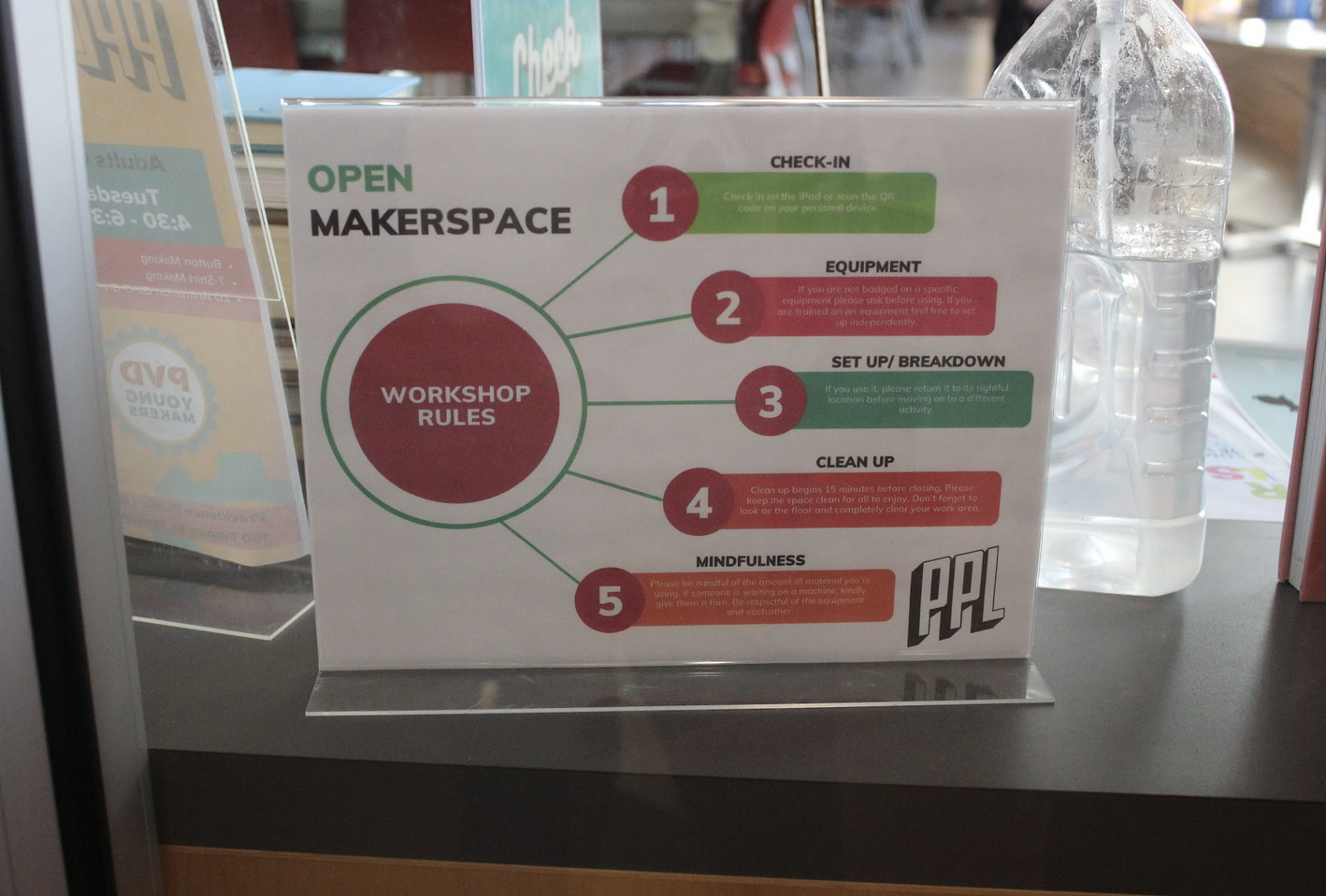
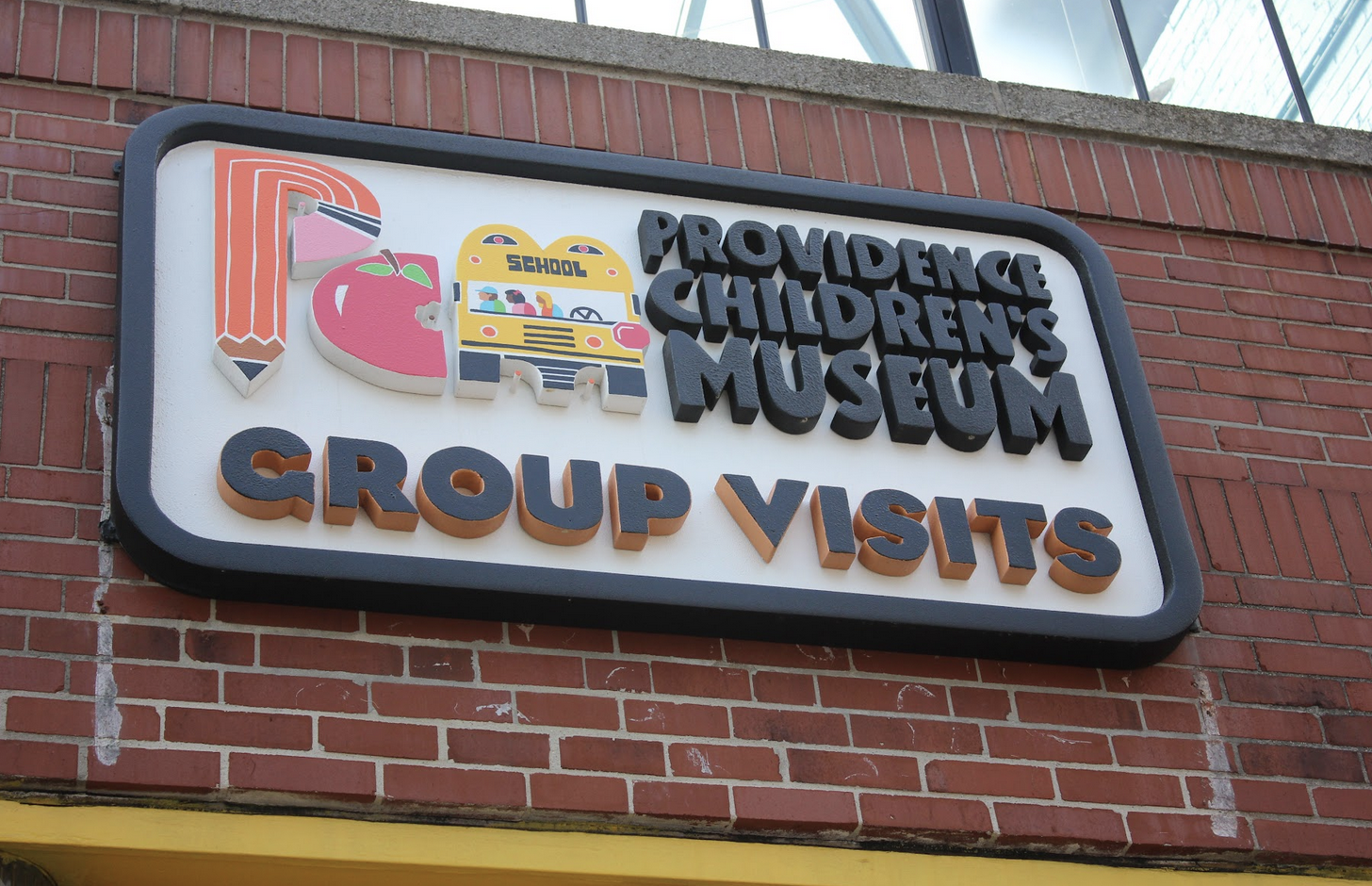
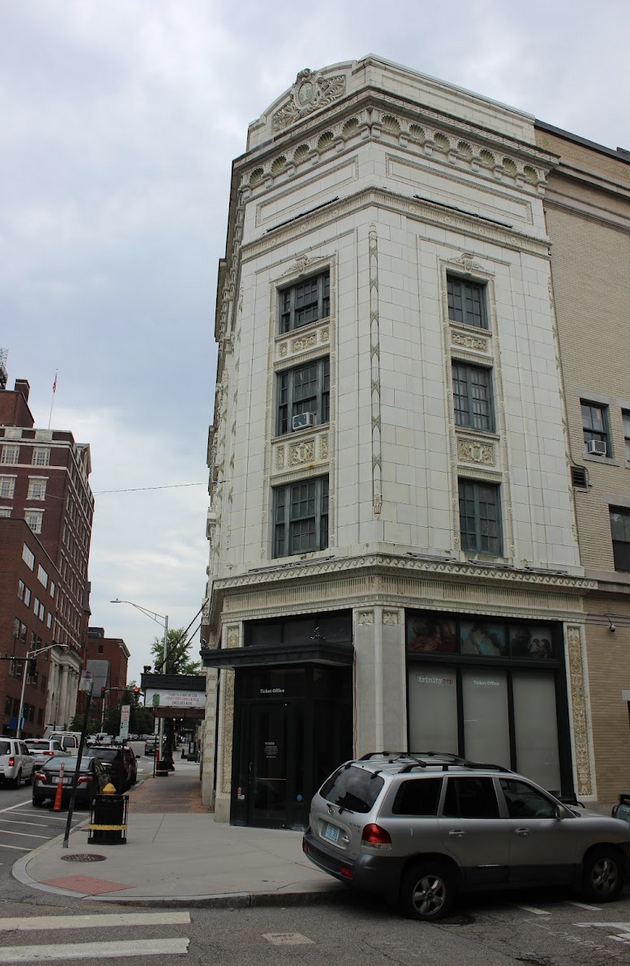
Art in Providence
By Sally Ryan and Jillian Ray
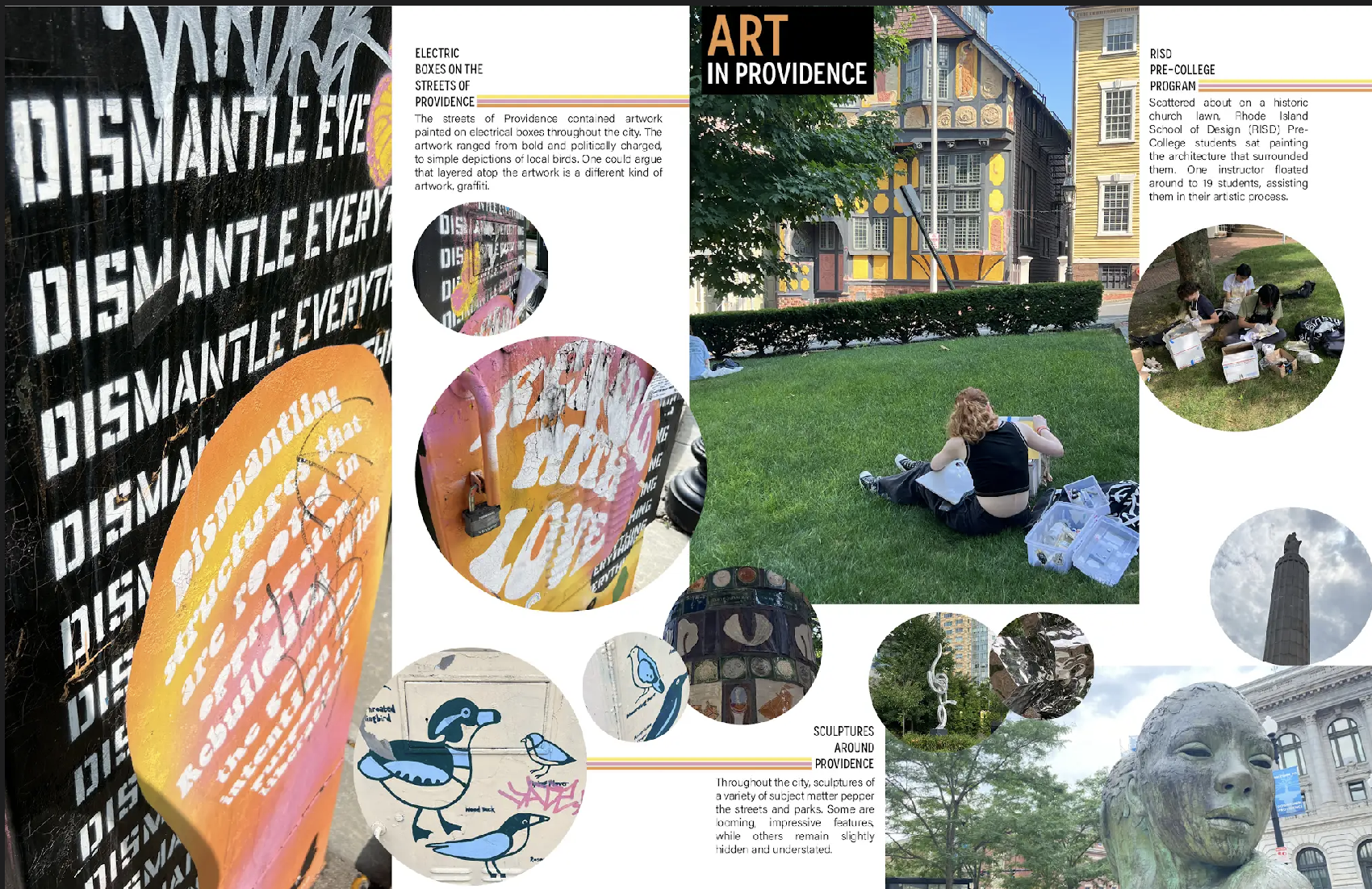
Black History (Barely Acknowledged) in Providence
By Rachel Gross and Raven Mitchell
